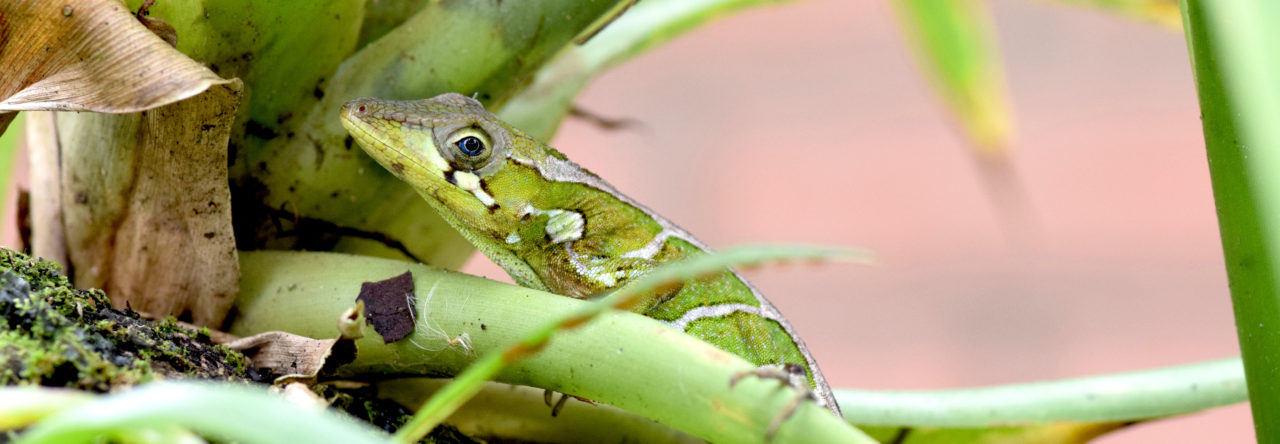
Abigail Dennis at SICB 2020
Embryonic environment is arguably one of the most influential factors on offspring development and later-life phenotypes. For oviparous species, this critical stage can experience potential fluctuations in moisture, temperature, and oxygen-availability. However, maternal choice in nest-site has the opportunity to buffer embryos from environments that might negatively affect survival or disadvantageous phenotypes. Undergraduate student Abigail Dennis of Trinity University in San Antonio, TX in Dr. Michelle Johnson’s lab, sought to investigate maternal nest-site choice when mothers are given nesting conditions that have been shown to be unfavorable to offspring development.
To address this, Abigail housed female brown anoles (Anolis sagrei) in groups of 2-3 with 1 males per cage. Within each cage, females were given an option to nest in a heated box or an unheated box (ambient box). The heated nesting box was placed over a thermostat-controlled mat and both boxes were checked for eggs every 2-3 days. When an egg was found, depth and water proportion in surrounding soil were recorded. She predicted that females would avoid the deeper, warmer nesting conditions in the heated box and that nesting depths would be more variable in the ambient box. Thermal readings from the surface and base of the soil were recorded for each box. These temperatures were averaged in the ambient boxes and coupled with depth and temperature models for the heated boxes. Thermal conditions varied from 25.5 to 38 °C, although most nesting sites were found between 26.5 and 31 °C.
At SICB’s poster session on Monday, Abigail reported that there was no difference between the number of nest sites (N=36) found in heated or ambient boxes. However, females tended to avoid nesting in sites greater than 33 °C and there was a trend suggesting nests in the ambient box were deeper than those in the heated box. Soil moisture readings also did not differ between nest boxes. Abigail speculated that if global change increases surface soil temperatures, females may avoid higher temperatures that would negatively influence offspring development by altering their nest depth. Abigail is writing this work as part of her Senior Thesis and is interested in pursuing graduate work in the evolution of development.
















